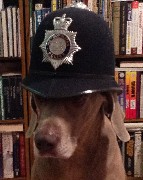It's generally accepted that when doubling up, you don't add the two NRRs - but you add 5 to the highest NRR to get your actual NRR - assuming perfect fit, usage. So a 33 NRR plug with muffs of any reasonable number (24-30 NRR) gives you a best-case 38 NRR.
Here's the question: based on this, assuming you always double up, why would you ever choose a more expensive set of muffs for the higher NRR UNLESS you were paying for additional features and the higher NRR is a bonus OR you plan to use just muffs some of the time?
This could apply to the Peltor 300 vs 500 or even the Howard Leight Impact Sport vs Pro.



 Reply With Quote
Reply With Quote



